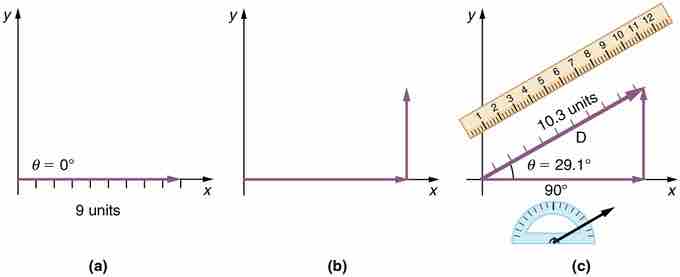Adding and Subtracting Vectors
One of the ways in which representing physical quantities as vectors makes analysis easier is the ease with which vectors may be added to one another. Since vectors are graphical visualizations, addition and subtraction of vectors can be done graphically.
The graphical method of vector addition is also known as the head-to-tail method . To start, draw a set of coordinate axes. Next, draw out the first vector with its tail (base) at the origin of the coordinate axes. For vector addition it does not matter which vector you draw first since addition is commutative, but for subtraction ensure that the vector you draw first is the one you are subtracting from. The next step is to take the next vector and draw it such that its tail starts at the previous vector's head (the arrow side). Continue to place each vector at the head of the preceding one until all the vectors you wish to add are joined together. Finally, draw a straight line from the origin to the head of the final vector in the chain. This new line is the vector result of adding those vectors together.

Graphical Addition of Vectors
The head-to-tail method of vector addition requires that you lay out the first vector along a set of coordinate axes. Next, place the tail of the next vector on the head of the first one. Draw a new vector from the origin to the head of the last vector. This new vector is the sum of the original two.
To subtract vectors the method is similar. Make sure that the first vector you draw is the one to be subtracted from. Then, to subtract a vector, proceed as if adding the opposite of that vector. In other words, flip the vector to be subtracted across the axes and then join it tail to head as if adding. To flip the vector, simply put its head where its tail was and its tail where its head was.